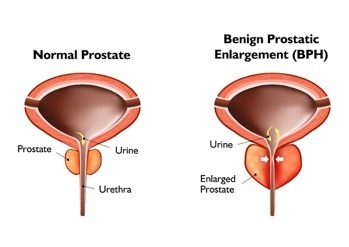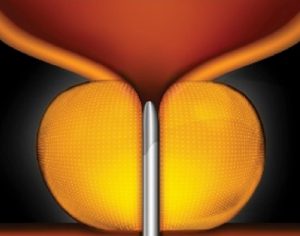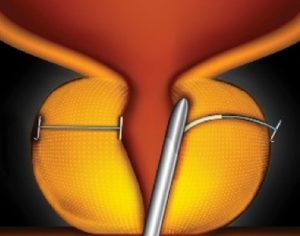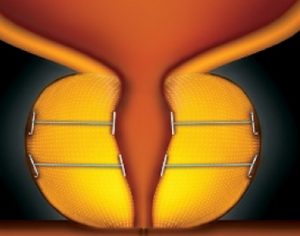

What is BPH?
As a man ages, he may develop a common condition known as Benign Prostatic Hyperplasia, or BPH, in which the prostate begins to enlarge. It is so common, in fact, that it affects over 500 million men across the world and over 40 million in America alone. Fortunately, this is a benign condition and is not related to prostate cancer, but its symptoms can greatly affect quality of life. Currently, 40% of men in their fifties are affected, with the number jumping to 70% of men in their sixties.
There are several symptoms indicating the possibility of BPH, which is caused by the enlarged prostate pressing on the urethra and causing a blockage:
Delay or difficulty in beginning to urinate
Slow or weak urine stream
Frequent urination at all times, day or night
Urgent need to urinate
Urine stream that starts and stops
Feeling of not being able to empty your bladder


If you notice any of the above symptoms, you should contact our office to schedule an appointment with Dr. Gholami.
There is an online questionnaire called the International Prostate Symptom Score, or IPSS, <International Prostate Symptom Score (IPSS)> that can help you determine the severity of BPH.
Remember, you are not alone – the leading reason that men visit a urologist is due to symptoms of BPH. There is also a new treatment that may be able to help you – the UroLift® System.
The UroLift® System Treatment
What Is The UroLift® System?
The UroLift® System Treatment helps to provide rapid relief of BPH symptoms, rapid recovery time, and is a minimally invasive procedure. It is a treatment that can be done earlier in a BHP diagnosis and may help to get you off medication for the condition and even to avoid major surgery later on.
Its goal is to relieve the symptoms so you can get back to your daily life and activities. With better results than medication, it is a safe and effective treatment and the only BPH procedure that has been shown to not cause ejaculatory or erectile dysfunction.

How Does The UroLift® System Work?
With the UroLift System, a breakthrough treatment that lifts and holds the enlarged prostate tissue so that it will no longer press on and block the urethra. Unlike other procedures, it does not involve cutting, heating, or removal of the prostate. It is typically performed with a local anesthesia on an outpatient basis in either a surgery center or doctor’s office, and the patient is usually home the same day and does not require a catheter.








Enlarged Prostate
An enlarged prostate can narrow or even block the urethra.
Step 1
The UroLift Delivery Device is placed through the obstructed urethra to access the enlarged prostate.
Step 2
Small UroLift Implants are permanently placed to lift and hold the enlarged prostate tissues out of the way and increase the opening of the urethra
Step 3
The UroLift Delivery Device s removed, leaving an open urethra designed to provide symptom relief.
1. Roehrborn, J Urology 2013 LIFT Study
Talking to Your Doctor About BPH
Benign Prostatic Hyperplasia is a common condition among aging men and is responsible for the majority of urologist visits by men each year. If you’ve experienced any of these symptoms or maybe have tried other treatments or medications, the UroLift® System Treatment may be a solution to consider.
Before your next appointment with your doctor, you can take this BPH Symptom Quiz in the privacy of your home. It was created by the American Urological Association to help you get a better idea of the severity of your symptoms. You can then take these results to your doctor to discuss which treatment option would be best for you.


